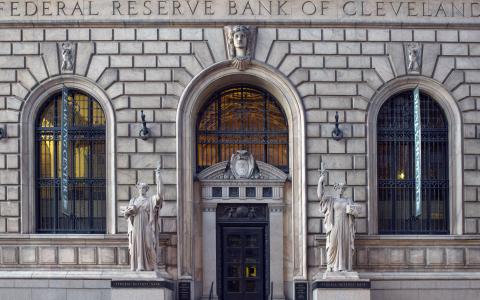
(TheStreet) - Federal Reserve officials have made clear in recent weeks that they aren’t ready to cut interest rates yet, and finance professionals are getting the message.
Progress on inflation has stalled. The Fed's preferred inflation gauge, the personal consumption expenditures price index, climbed 2.7% in the 12 months through March, well above the Fed’s 2% target.
“Holding our restrictive stance for longer is prudent at this point as we gain clarity about the path of inflation,” Cleveland Fed President Loretta Mester said last week.
The labor market will likely have to show further weakness too before the Fed trims rates. Nonfarm payrolls rose 175,000 in April, below the 242,000 average for the prior 12 months.
Economic growth registered only 1.6% annualized in the first quarter, but economists said the underlying numbers are strong.
May purchasing-manager surveys also pointed to a buoyant economy. "Business confidence has lifted higher to signal brighter prospects for the year ahead, though companies remain cautious,” said S&P's chief business economist, Chris Williamson.
The Atlanta Fed's GDPNow forecasting tool points to 3.5% GDP growth in the current quarter.
So it’s no wonder that Torsten Slok, chief economist for the private-equity giant Apollo Global Management, has predicted that the Fed will leave rates unchanged this year.
And Harvard economist Larry Summers, former Treasury secretary, said there’s a 15% to 25% chance that the central bank’s next move will be an interest-rate increase.
Goldman Sachs's rate forecast
At Goldman Sachs, the recent data have led economists to push out their projection for a Fed rate cut to September from their previous forecast of July. The next Fed meeting is in June, followed by July and September.
Interest-rate futures point to a 50% chance that the central bank will lower rates by September and 61% by November, according to CME.
“Comments from Fed officials [last week] suggested that a July cut would likely require not just better inflation numbers but also meaningful signs of softness in the activity or labor market data,” the Goldman economists said.
“After the stronger [purchasing manager reports] and lower jobless claims, this does not look like the most likely outcome.” Jobless claims totaled 215,000 in the week ended May 18, down from 223,000 a week earlier.
If coming monthly core PCE price indexes show year-on-year inflation in the low 2% range, most Fed officials will support a rate cut, the Goldman economists said. The core PCE index, which excludes food and energy, hit 2.8% in March.
Fed Chair Jerome Powell’s take on rates
“We interpret Fed Chair Jerome Powell’s recent comments as pointing toward a middle-of-the-road path of cutting gradually,” the economists said.
That would “recognize both the considerable progress in solving inflation and the realities that inflation is likely to remain noticeably above target this year and the economy is performing well at the current level of interest rates.”
Powell earlier this month said “I don’t know how long it’ll take,” addressing when the Fed might have the confidence to cut rates, according to Bloomberg. “I can just say that when we get that confidence, then rate cuts will be in scope.”
Goldman’s economists cite three reasons that it's difficult to call when the Fed will start reducing rates.
1. “We continue to see rate cuts as optional, which lessens the urgency.
2. “Inflation is likely to be much improved by September, but still at a rate that makes cutting a less than obvious decision.
3. “The Fed leadership appears to share our relaxed view on the inflation outlook and will likely be ready to cut before too long. But a number of [Fed officials] still appear to be more concerned about inflation and more reluctant to cut.”
So what's the impact on you? Higher interest rates mean more income from your savings accounts and money-market funds, but also higher payments on your home, auto, credit-card, student and personal loans. Lower rates, of course, mean the opposite on both counts.
By Dan Weil



